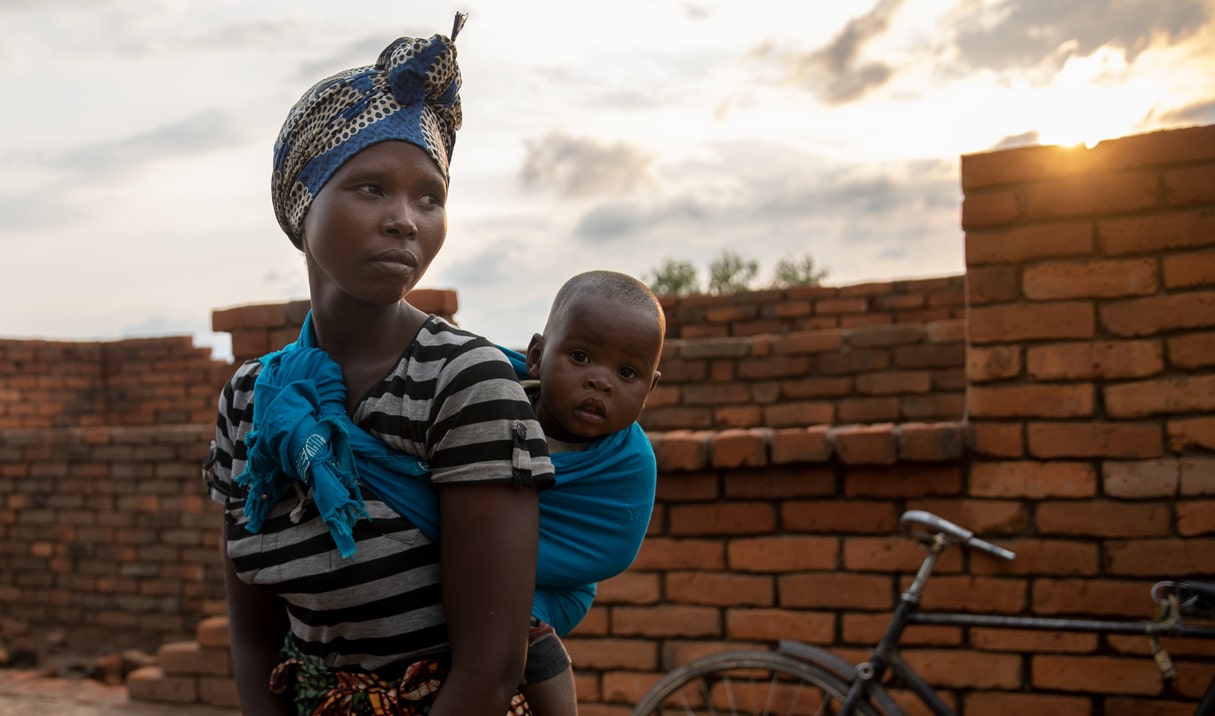
This Is What HOPE Looks Like
2019 ANNUAL REPORT
Dear Project HOPE supporter,
From massive migrations in Venezuela to devastating storms in Mozambique and the Bahamas, it’s easy to look back on 2019 as a year of incredible challenges. But it was also a year of remarkable progress.
There is so much to be proud of in what we accomplished last year, including our rapid responses to disasters like Hurricane Dorian and Cyclone Idai. But as much as anything, I’m proud of the hunger I saw in our teams for Project HOPE to evolve as an organization — a hunger for our field programs to be recognized and acknowledged as the center of everything we do.
Many of the world’s biggest health crises find their roots in larger forces like conflict, poverty, and inequality. At the heart of these problems, however, is a threat that lies at the heart of Project HOPE’s mission: an extreme shortage of health care workers worldwide.
Every day, Project HOPE places power in the hands of health workers to save lives in communities that need it most. In Colombia, we’re strengthening hospitals as they provide a lifeline to Venezuelans who have left everything behind in search of better care. In Sierra Leone, we are providing nurses and midwives with techniques they desperately need to save mothers and infants. In 100 countries and counting, our response to COVID-19 is delivering millions of pieces of personal protective equipment and expert virtual training straight to doctors and nurses on the front lines. More than anything, this is what makes us Project HOPE.
The threats to global health are many. But every day, I see us building a different world: a world where no mother or newborn dies of preventable causes. Where health systems are prepared for disasters and pandemics. Where health care workers practice innovative solutions in their communities — and then teach them to others.
That’s what hope looks like. Thank you for helping us pass it on.
For a stronger world,

Rabih Torbay
President and CEO
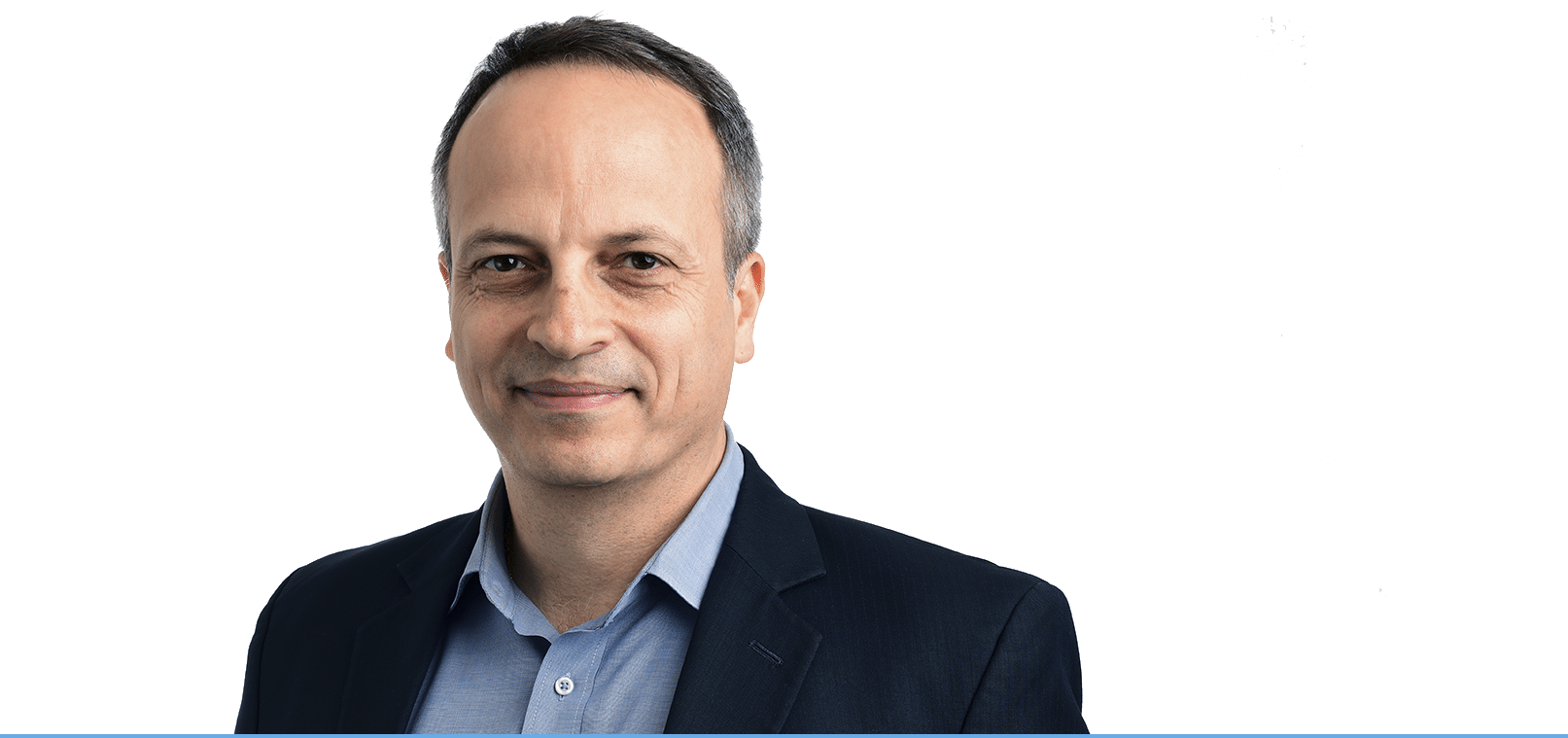
Our Impact in 2019
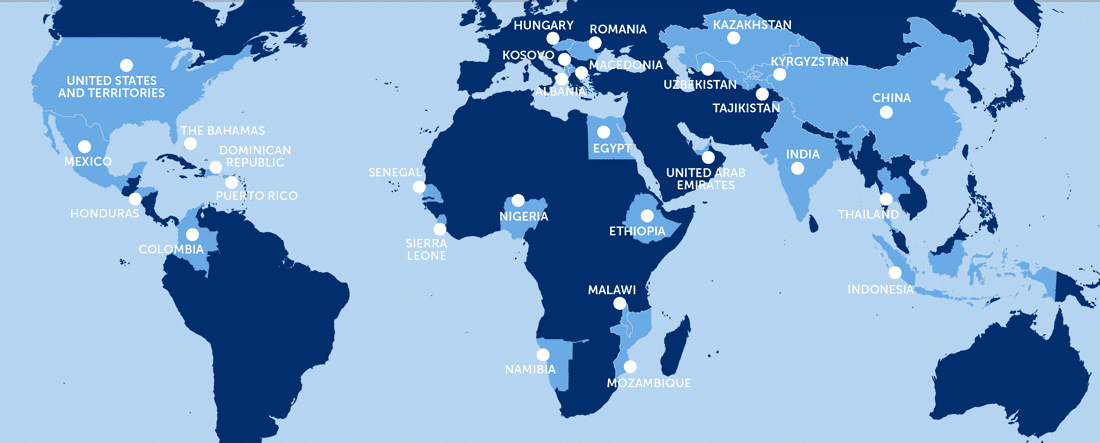
In 2019, Project HOPE…
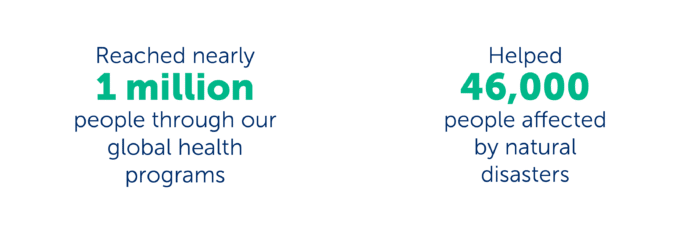
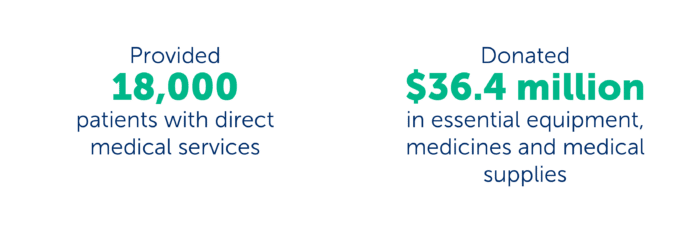
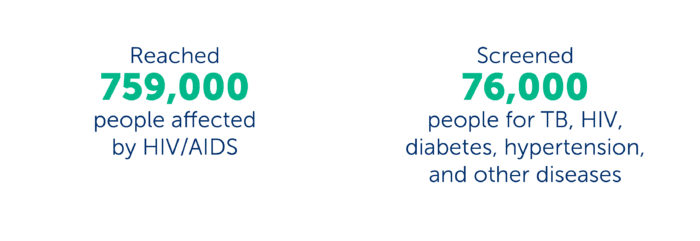
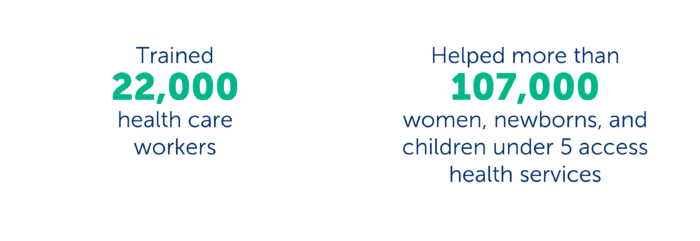

Solutions Built to Last
Hope can take many forms. Often, it looks like a helping hand after disaster — but in many places, it looks like a mother finding comfort in the moments before delivery. A child receiving the medication she depends on. A nurse learning the skills that save lives.
Real change means looking long-term. That’s why Project HOPE invests in sustainable solutions that transform communities for good: training health care workers, screening people for disease, and giving mothers and babies a healthier start.
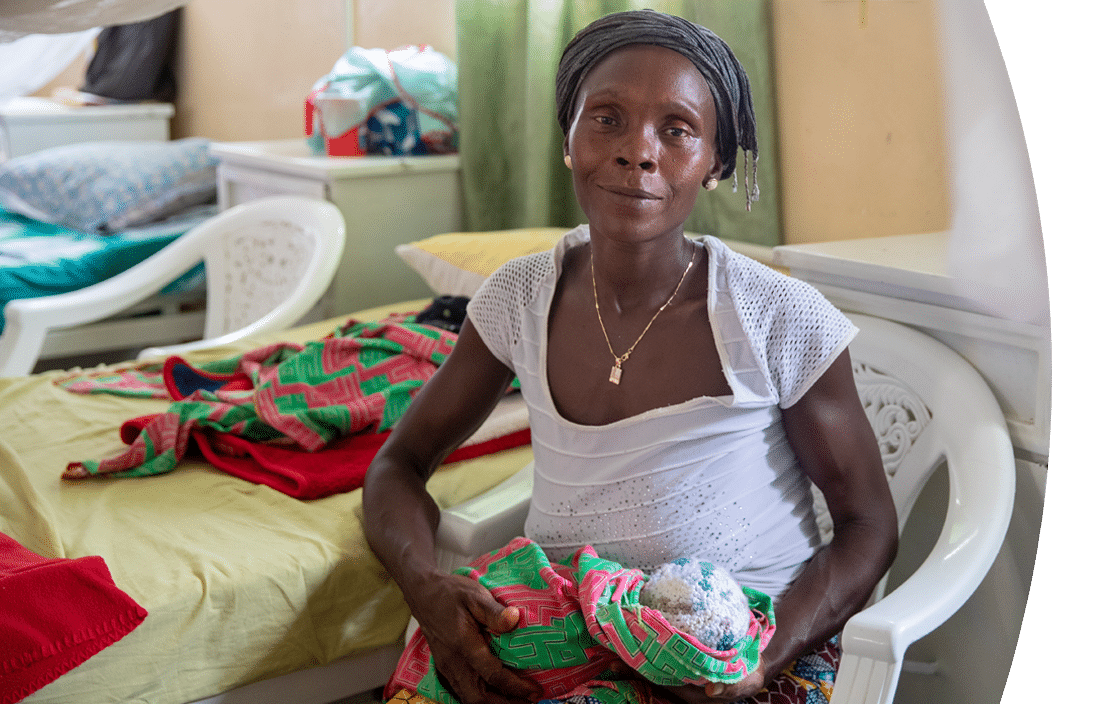
HOPE in Sierra Leone
Sierra Leone is one of the hardest places in the world to be a mother. When Ebola struck in 2014, a staggering 21% of the country’s overall health workforce died. It compounded an already dangerous situation, leaving millions of women to give birth at home, in unsanitary conditions, with no instruction about how to care for a newborn.
As a result, Sierra Leone has the highest rate of maternal mortality in the world: 1 out of every 17 women won’t survive pregnancy or delivery.
Project HOPE has been working to build a stronger future for mothers and babies in Sierra Leone since 2014. Inside Bo District Hospital, we’re training health care workers with lifesaving techniques like Kangaroo Mother Care, a skin-to-skin warming technique that keeps low-birth-weight babies safe.
It’s part of our mission to help improve women’s access to quality care, build the skills of health care workers, and expand community support where mothers and infants need it most.
Because no woman or child should die from causes we can prevent.
Related stories
>> Skin-to-Skin: Alternative Incubation Technique Saves Newborn Lives
>> In Malawi, Transformation Doesn’t Happen Alone
>> Mothers in Indonesia Couldn’t Reach Care. So It Came To Them
![]()
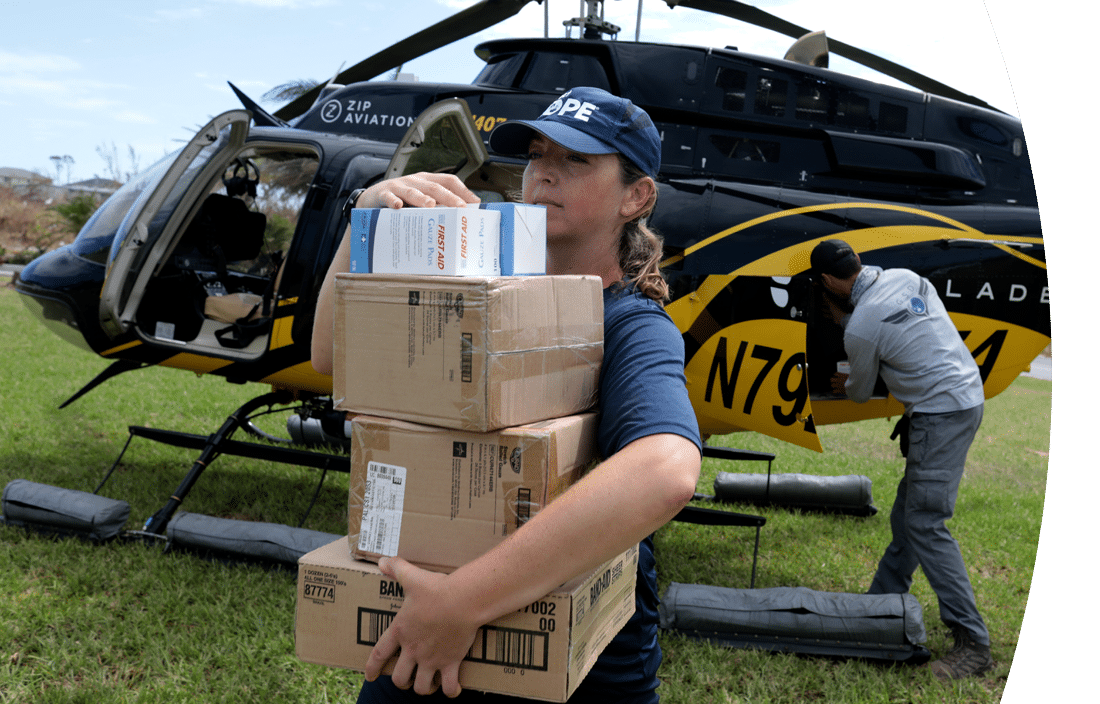
When The World Needs HOPE, We’re There.
A massive humanitarian crisis in Venezuela. A generational storm in the Bahamas. A devastating cyclone in Africa.
A health crisis can strike at any time. When every minute means life or death, Project HOPE is there — in the critical moments that follow disaster, and on the front lines of humanitarian crises that affect the health of the world’s most vulnerable people.
With your support, Project HOPE provided direct medical services to more than 46,000 people affected by natural disaster or humanitarian crisis in 2019. In Colombia, Mozambique, and around the world, we help strengthen communities, health care workers, and public health systems so everyone has access to the health care they need to reach their full potential.
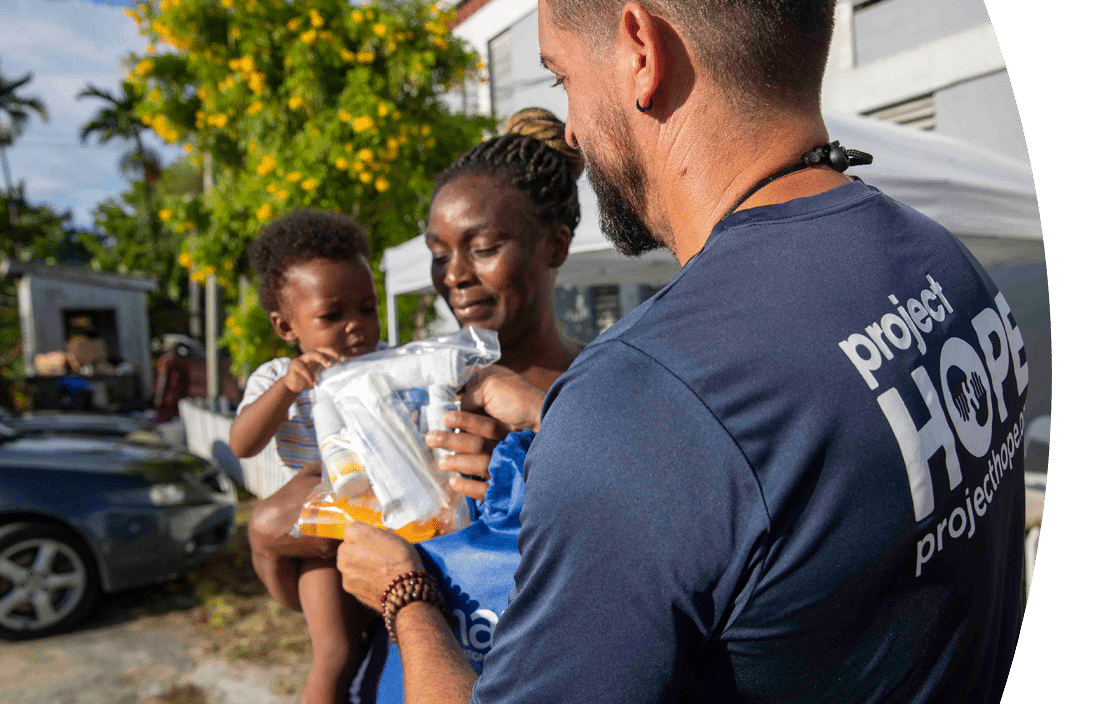
HOPE in The Bahamas
A year ago, Great Abaco Island in the Bahamas was known as a quiet island community of fishermen, laborers, and boaters. In September 2019, it became known as a place changed by devastation.
When Hurricane Dorian made landfall on Abaco, it ravaged the island as the strongest hurricane to ever make landfall in the Bahamas. For two days, Dorian punished Abaco with 200-mile-per-hour winds and devastating rains. Hour by hour, neighborhood by neighborhood, entire swaths of the island were erased.
Project HOPE was one of the first organizations on the ground, reaching survivors with essential medicines and supplies in the wake of the storm. Days after the storm hit, HOPE was delivering medical supplies like insulin needles and phenobarbital to Marsh Harbour Community Clinic on Abaco. Within weeks, our expert medical volunteers in Nassau were providing medical exams for evacuees with medical conditions like hyperglycemia, hypertension and bronchitis.
In total, Project HOPE provided direct health services to 1,545 survivors, distributed $3.8 million in medicines and supplies, and delivered over 16,519 hygiene kits to help residents meet their immediate health needs.
Related stories
>> For Dorian’s Survivors, the Devastation Continues
>> Bracing for Storm Season in the Era of COVID-19
>> Q&A With a First Responder: Memories of Mozambique

 Timely, High-Impact Health Policy Analysis
Timely, High-Impact Health Policy Analysis

Project HOPE’s journal, Health Affairs, remains the premier journal of health policy and is required reading for an ever-increasing group of policy experts and consumers. In 2019, Health Affairs achieved its highest-ever Impact Factor (5.711), which places it in the top 5.5% for scholarly impact among all academic journals.
There were five Health Affairs thematic issues in 2019: Patients as Consumers, Violence & Health, Community Care for High-Needs Patients, Rural Health, and Military Health Systems.
Health Affairs’ multi-year project to promote evidence-based conversations about U.S. health spending continued in 2019. Its Council on Health Care Spending and Value, co-chaired by former Senate majority leader Bill Frist and former commissioner of the U.S. Food and Drug Administration, Margaret Hamburg, convened two meetings in 2019. In addition, Health Affairs, along with the National Pharmaceutical Council, one of the project’s partners, hosted a well-attended event in Washington, “Health Spending: Moving from Theory to Action.”

Financial Summary
Project HOPE’s low overhead means more of your support goes to funding health projects around the world. Project HOPE has earned a reputation for financial integrity and efficiency. We take stewardship seriously, and we work to maximize the value of every contribution we receive.


How you can help
Make a lifesaving gift to support our work now and for the future at projecthope.org/donate.
Are you a healthcare or other professional who would like to learn more about volunteering abroad with Project HOPE? Learn more about our volunteer program and join our volunteer roster.
Stay up-to-date on our lifesaving work around the world by following us on Facebook, Instagram, LinkedIn, and Twitter, and help spread the word by sharing stories that move and inspire you.
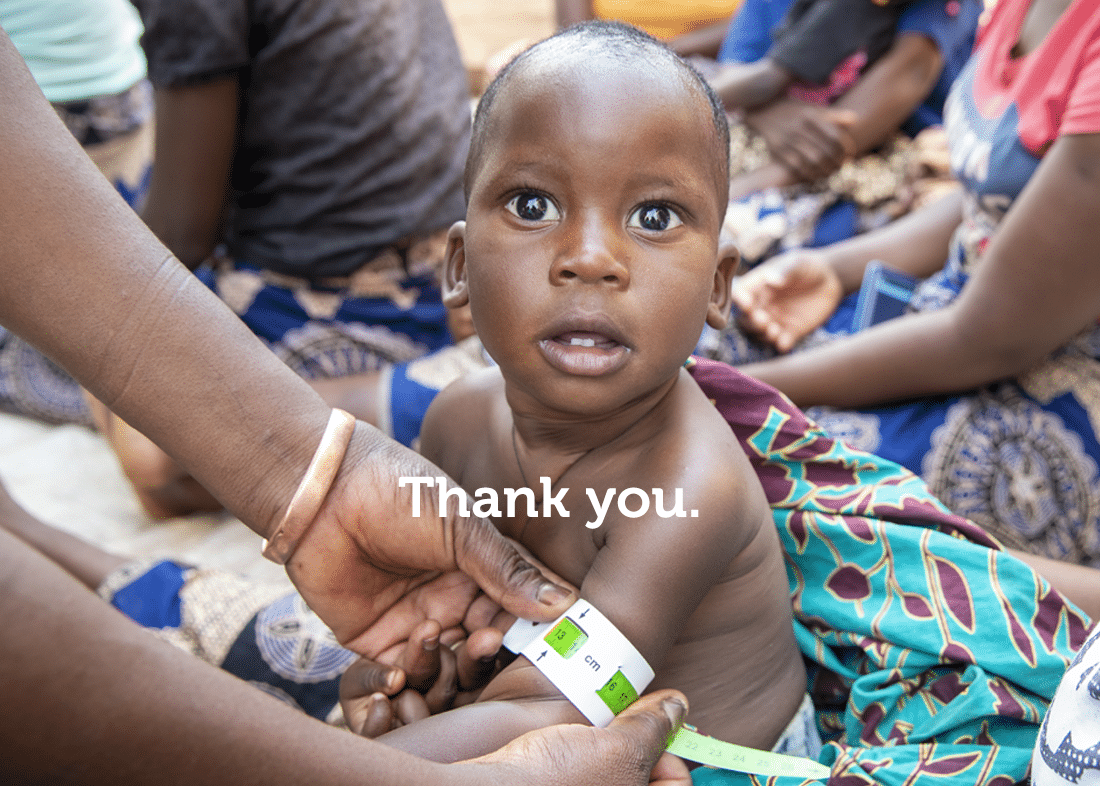
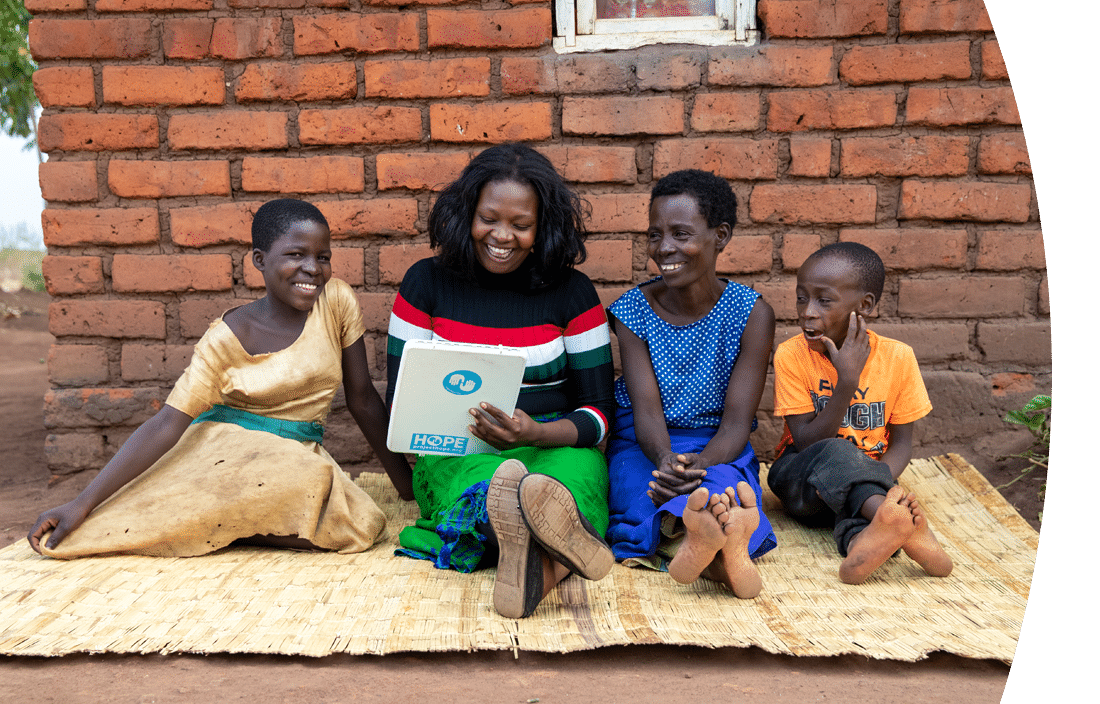
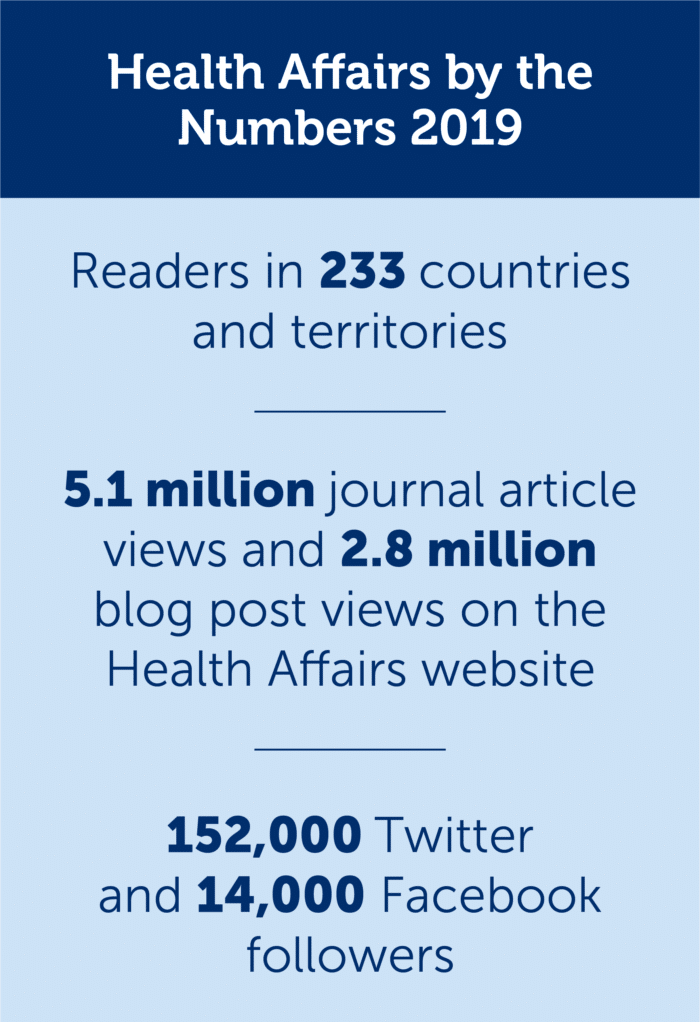 Timely, High-Impact Health Policy Analysis
Timely, High-Impact Health Policy Analysis